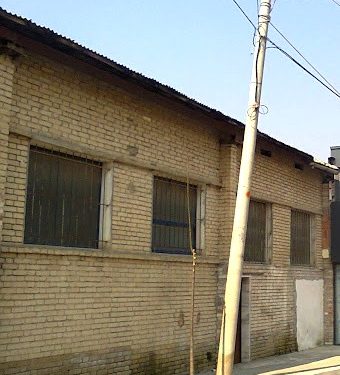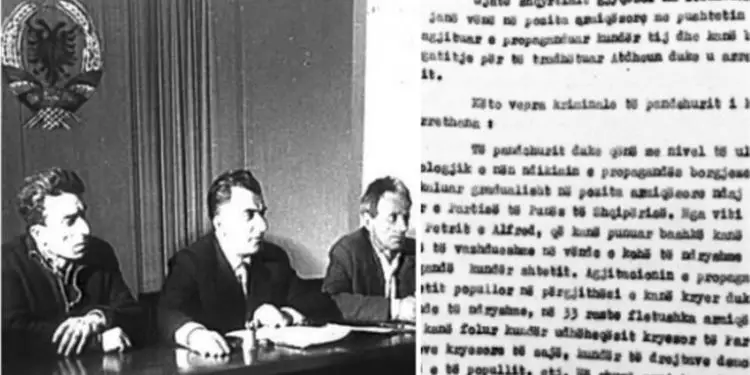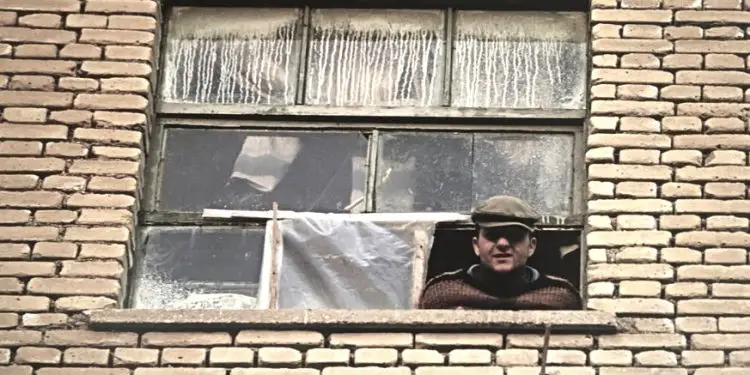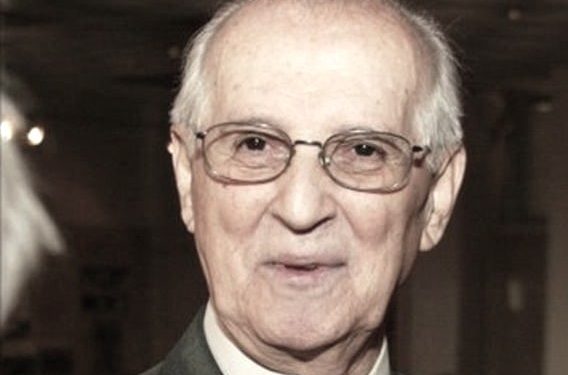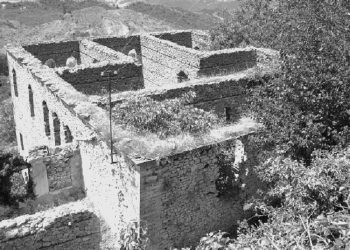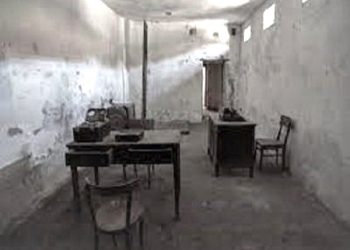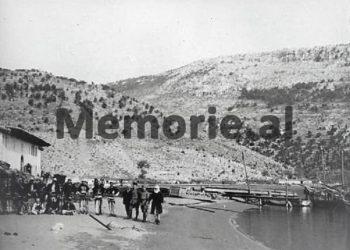By Afrim Imaj
– The archival document with the indictment by the judges; Fehmi Abdiu, Fejzi Shehu, Mustafa Xjixha and prosecutor Asim Ruli, where the three defendants were sentenced to 50 years in political prison-
Memorie.al / In March 1989, in the Military Printing Office in Tirana, where Party bulletins of the ‘secret’ and ‘top secret’ level and official documents classified as such were printed, an anti-communist organization was discovered, which aimed to overthrow the government popular. The sensational news shocked the entire public, despite the care of the secret services, (State Security), to isolate and hide the event. This time, the anti-party element had escaped not only the volunteer observers of the Security, but also the army of numerous guards who were watching “non-stop”, in every corner of the printing house. For the official authorities, the well-structured organization “Committee for the Protection of the Rights of the Albanian People”, as the group of rebel typographers was self-christened, presented a high risk. Such was the platform, the goals and especially the call made recently, to demonstrate in front of the headquarters of the Central Committee of the PPSh, the popular revolt against the leaders of the regime. The documents of the time contain the evidence obtained during the operation and the specific circumstances, how the group operating in the high security base, in the heart of Tirana was discovered…!
News from Shkodra
In the midnight report of March 10, 1989, the officials of the Shkodra Interior Branch informed their superiors in Tirana that unidentified groups had distributed and placed in the most visible places of the city, communiqués with deeply hostile content. Further clarifications revealed the authorship of these actions, behind which stood the self-christened “Committee for the Protection of the Rights of the Albanian People”. Her communique ended with a call for a public meeting, on Monday, the morning of March 13, 1989, in front of the headquarters of the Central Committee of the ALP, to demand the resignation of the communist leadership. This was singled out as the most important and serious part of the report from Shkodra. It ended with the announcement of the arrest of two suspects.
The immediate reaction to the unexpected situation began with the examination of specimens brought urgently from the northern city. “Unlike other cases of this nature,” recalls one of the Army Security officers who followed the case, “the flyers of March 10, 1989, did not belong to the product of the typewriter, but to the most advanced printing technology.” This fact enabled the quick identification of the machine that produced them. “One such,” adds the military expert, “only the Military Typography in the capital had.” “This, according to him, – unequivocally confirmed that the communiques were printed there. What remained was the discovery of the authors and technicians who were involved in their reproduction. But could it get to them so quickly? The situation, however delicate, did not appear impossible to solve…”!
The two arrested
Petrit Nuri Ishmi and Xuljeta Cuka, the two arrested in the late hours of March 10, 1989, were initially faced with the act-expertise of the communiques distributed in Shkodër, where their reproduction was confirmed, in the machines of the Military Typography. In the first moments, the two suspects, then employees of this enterprise, tried to deny any connection with the event, but it did not work. The way the evidence and the results of the examination of the communiques were provided, did not leave a path for any kind of alibi. It was for this reason that Ishmi and Cuka, without much resistance, confessed at length the activity of their organization. “The testimonies of Ishmi and Cuka were surprising”, says the former officer of the Army Security who dealt with the case, returning to the profile and dangerousness of the group, which had operated in the heart of a secret base in the capital.
Simultaneously with the authorship of the communiques, the two prisoners confirmed in detail the history of the illegal organization, created in the fall of 1987. Their confession led to the cross-examination of another protagonist of the group, who operated in the Military Typography. The name of Alfred Berisha, newly denounced by Ishmi and Cuka, was not unknown to the Tirana Police. For a long time he had been assigned, as organizers of the distribution of leaflets and hostile tracts, in different times and places, with ink, pencil, and hard tools. The confrontation in the process revealed all the mysteries of the anti-communist “nursery”, which operated where the secret bulletins were printed…!
Shocking evidence…!
In the report dated 13.3.1989, of the Directorate of Internal Affairs of Tirana, for the First Secretary of the Party Committee of the district, an extended overview of the unusual event, in the high security establishment in the capital, is given. Along with the data of the three defendants, there were detailed descriptions of all the indisputable evidence provided up to that moment. The document underlines that the group of arrested typographers had prepared 5,000 pieces of communiques and divided them into three parts, intended to be distributed by 10.3.1989, in the cities of Shkodër, Durrës and Tirana. The report points out that of this considerable amount, 2,000 pieces were found in Petri Nuri Ishmi’s house, 1,560 pieces were collected in the city of Shkodra and the rest was found in a fire center in the city of Durrës.
The most mysterious part of the announcement for the head of the capital’s party was the finding that behind the group of typographers, a diplomat from a Western country was hiding in Tirana. From what the specialized bodies had discovered until that time, it was about the cultural attaché of the French Embassy in our country, Luc Bounol La Font. In addition to strong doubts, the document was reserved about its role in the activity of the self-styled organization; “Committee for the Protection of the Rights of the Albanian People”. However, the evidence provided by the Directorate of Internal Affairs was shocking and required the utmost appreciation. The situation the country was experiencing and the political developments in Eastern Europe made the event even more alarming…!
Guest from France
In examining the data on Luc Bounol La Font, the French diplomat in our country and his role in the activity of the anti-communist organization of typographers, the specialized services had uncovered a brief biography of him. The guest from France, born in 1964, who came to our country on 8.9.1988, was fluent in French, Russian, and Czech and had recently learned a little Albanian. Earlier, he had a brief experience as an intern in Moscow, where he followed the issues of the Warsaw Pact countries. The first data found his tendency to spread the influence of the Warsaw Pact countries and in particular that of the Soviet Union.
Meanwhile, it was proven that Luc Bounol La Font had secret connections and held frequent meetings with the three defendants of the typography process. His name was mostly associated with the idea of creating an illegal organization to sensitize the public against the regime. The statements of Petri Nuri Ishmi and Xuliana Cuka confirmed the fact that Luc Bounol La Font participated in the formulation of the text of the communiqué and devised the plan for the anti-communist demonstration, in front of the headquarters of the Central Committee of the PPSh, on the morning of March 13, 1989.
The conviction file of Petri Ishmi, Frederik Berisha and Xuljeta Cuka!
-Defendants, the typographers who printed the secret bulletins-
Full 50 years in prison, for 5,000 communications with hostile content! The final decision on the punishment of Petri Ishmi, Alfred Berisha and Xuljeta Cuka, signed by the judges; Fehmi Abdiu, Fejzi Shehu, Mustafa Xhixha and prosecutor Asim Ruli, bears the date 11.08.1989 and the number 456 in the registry of the Court of Tirana.
The other articulations of the court file for the punishment of the hostile group of the printing press of the Military Typography, are an absurd summary that seeks to justify the social dangerousness of the anti-socialist behavior of the accused already identified as organizers of the anti-communist demonstration, warned to take place on the morning of March 13, 1989, in front of the headquarters of the Central Committee in Tirana. But what else does the document of the judicial process for the punishment of the members of the hostile group of the printing press of secret bulletins, otherwise known as the Military Typography…?!
“Petrit Ishmi, Alfred Berisha and Xuljeta Cuka, being of a cultural and ideological level and under the influence of bourgeois-revisionist propaganda, have gradually moved into hostile positions towards popular power and the Labor Party.
From 1987, the defendants Petrit and Alfred, have worked together and have continuously developed in different places and times, agitation and propaganda against the state.
Agitation and propaganda against the people’s power in general, they carried out by placing in different places, in 33 cases, hostile leaflets, with which they spoke against the main leader of the Party, against its main cadres, against the democratic rights of the youth and the people, etc.
In many of them they have marked the initials ‘KMDPSH’, thus calling themselves as; Committee for the Protection of the Rights of the Albanian People. Following their hostile activity, they also included the defendant Xuljeta Cuka, who started working at the Military Typography in June 1988, and who had liberal views on work and life!
So, after October 1988, the defendants carried out their activities jointly. Even after this time, they have thrown out leaflets with hostile content, they have discussed that in the case of the big rally that would be organized on the occasion of the anniversary of the founding of the Party, and they would throw up hostile slogans.
At the beginning of March 1989, Petrit Ishmi, Alfred Berisha and Xuljeta Cuka, have agreed to print at their place of work, at the Military Printing Company, communiqués with hostile content. For this, they tasked Xuljeta Cuka to prepare the text of the communiqué and the latter, after compiling it, read it to two others, who approved its content.
Then they talked about distributing the communiqués, which they would do in the cities of Shkodra, Durrës and Tirana, dividing the tasks for this purpose.
To prepare the communiqués in question, taking advantage of the lack of control and other violations of the rules at work, they systematized two forms with the content of the communiqué and on 6.3.1989, from 19:00 to 23:00, and they printed 5,000 such pieces on Juliet’s pedal board.
The hostile content of this communique lies in the fact that it calls on the people to demonstrate for the overthrow of popular power, specifying both the time and the place where they would be organized. That night, Petrit Ishmi, Alfred Berisha and Xuljeta Cuka, took out the communiques secretly to distribute them later.
Before 10.3.1989, they hid some of them in a fire center in Shkodër, while on this date, Petrit Ishmi and Xhuljeta Cuka took 1500 communiqués with them and went to the city of Shkodra.
That day, in the afternoon, after they got there, after dark they started distributing them, in the industrial area, where they threw a lot of them in enterprises, institutions and in the homes of different citizens.
Then they hid the remaining part and went out to Baçallek to find a car and leave for the city of Durrës, but they were stopped there by police officers.
In addition, it was found that Petrit Ishmi, Alfred Berisha and Xuljeta Cuka, after November 1988, talked and agreed several times to flee abroad. For this, they asked Bashkim Beqiraga, who performed military service in Ksamil, for help. Then they asked an employee of the French Embassy for help to help them escape.
In addition to these options, Xuljeta has asked Ylvia Kadi for help, to help her with a foreign specialist, for this purpose. Recently, they talked about escaping to Yugoslavia after distributing the communiques, crossing the border from Dibra.
The committed acts represent significant social danger, as they are directed against the state, the dictatorship of the proletariat, the freedom and independence of our socialist country. Their conduct is evidence of the class war, which takes place in our country by internal and external enemies, who work frontally, but without success, to attack the People’s Socialist Republic of Albania.
Petrit Ishmi, has been convicted before, he has a bad personality, bad behavior and attitude at work and in the family. This is also Alfredi, who, although he does not have a bad personality, has been harboring hostile thoughts for several years. Even Juliet, although young, has been consistent in criminal activity. Memorie.al




